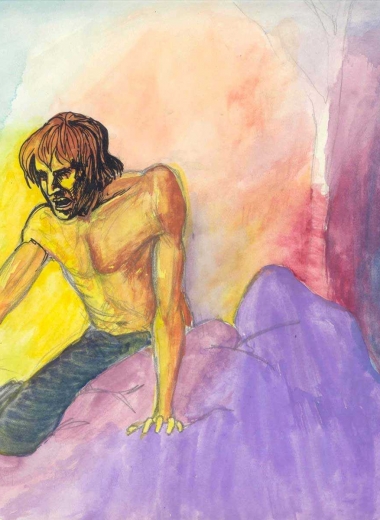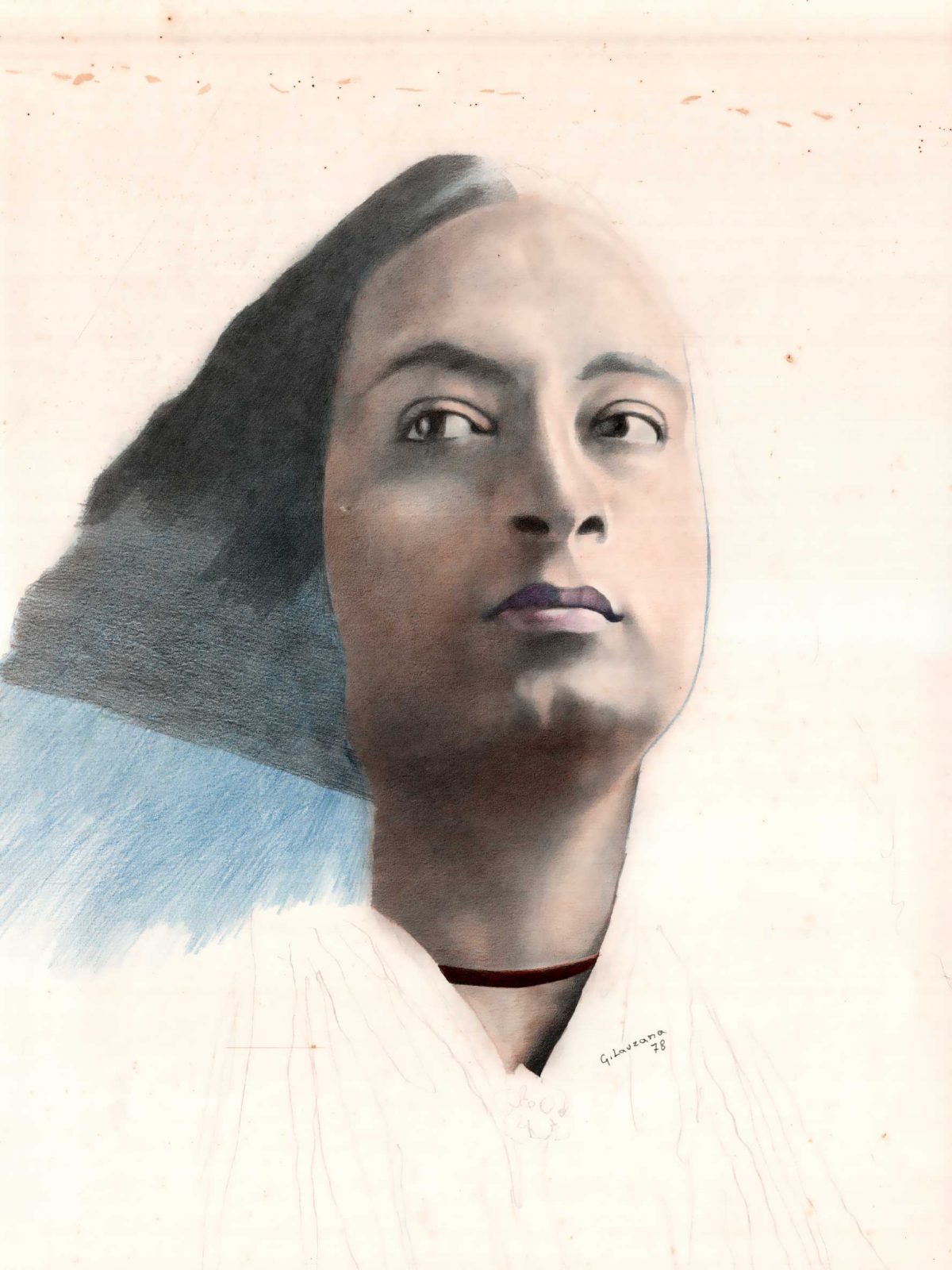
Little girl with dog
1991. Crayon on cardboard cm 32 x 47
Progr. number of the 2010 catalog: 15

Yogananda
2010. Crayon on cardboard cm 33 x 47
Progr. number of the 2010 catalog: 29

Christ on the cross
1969. Tempera on cardboard cm 24 x 33
Progr. number of the 2010 catalog: 255

Idealization
2010. Tempera on cardboard cm 32 x 24
Progr. number of the 2010 catalog: 230

Idealization
1974. Oil on canvas cm 30 x 39
Progr. number of the 2010 catalog 199

Jesus
2003. Print on cardboard cm 30 x 39
Progr. number of the 2010 catalog 88
Graziano Lauzana
Painter
A catalogue of paintings which provides a comprehensive view of the works of Graziano Lauzana and discusses his themes.


Idealization
1974. Oil on canvas cm 30 x 39
Progr. number of the 2010 catalog 199
Jesus
2003. Print on cardboard cm 30 x 39
Progr. number of the 2010 catalog 88


Idealization
2010. Tempera on cardboard cm 32 x 24
Progr. number of the 2010 catalog: 230
Christ on the cross
1969. Tempera on cardboard cm 24 x 33
Progr. number of the 2010 catalog: 255


Little girl with dog
1991. Crayon on cardboard cm 32 x 47
Progr. number of the 2010 catalog: 15
Yogananda
2010. Crayon on cardboard cm 33 x 47
Progr. number of the 2010 catalog: 29

Painting is a blind man's profession. He paints not what he sees, but what he feels, what he tells himself about what he has seen.
Pablo Picasso
For Graziano Lauzana painting is a vocation…
… which has inspired him since his childhood and formative years, and he then honed by regular schooling in art.
He has always alternated between works commissioned by private individuals, public bodies and graphics studios and independent artistic projects, though the inner desire to “draw and paint purely for personal pleasure” soon became predominant. A key element of Lauzana’s work is his ability to evolve and modify his artistic language.
His art is therefore presented as an “open work”, which may be interpreted in different and largely unexplored ways, in many ways anticipating the approach of many younger artists who work with a wide range of expressive forms in their reaction to the complexity and the sensorial and topological stimuli of life in our times, confirming that in artistic creativity it is typical to perceive and metabolize the turmoil of the age.
However, it is possible to identify an element of continuity in maintaining his relevance which, following his natural inclinations, envisages drawing as a structured graphic form, one which is expressed directly, without any form of mediation, in his graphic works, portraits and sketches, and becomes a solid base for his oil paintings.
Lauzana’s artistic personality is thus his ability to infuse his drawings with surprising alliterations and in forceful, luminous interpretations and allusions, in the knowledge that reality can manifest itself in many different ways, which he addresses in a free and candid manner thanks to a signic approach which demonstrates a knowledge of the various artistic currents and their languages, though without being unduly influenced.
One constant feature of Lauzana’s work, therefore, is his continuous reference to reality, which does not necessarily mean that he is a realist but rather that he explores reality, without a priori preconceptions or self-limitation, in order to discover its inexhaustible wealth.
His stylistic malleability has resulted in original interpretations of clarification processes in light of these underlying influences. As part of this contextualization, freedom of expression is necessarily interpreted as a vanishing point in a search for identity which evolved in a coherent manner over the years and continues to this day.
For Graziano Lauzana painting is a vocation which has inspired him since his childhood and formative years, and he then honed by regular schooling in art.
He has always alternated between works commissioned by private individuals, public bodies and graphics studios and independent artistic projects, though the inner desire to “draw and paint purely for personal pleasure” soon became predominant. A key element of Lauzana’s work is his ability to evolve and modify his artistic language.
His art is therefore presented as an “open work”, which may be interpreted in different and largely unexplored ways, in many ways anticipating the approach of many younger artists who work with a wide range of expressive forms in their reaction to the complexity and the sensorial and topological stimuli of life in our times, confirming that in artistic creativity it is typical to perceive and metabolize the turmoil of the age.

Painting is a blind man's profession. He paints not what he sees, but what he feels, what he tells himself about what he has seen.
Pablo Picasso
However, it is possible to identify an element of continuity in maintaining his relevance which, following his natural inclinations, envisages drawing as a structured graphic form, one which is expressed directly, without any form of mediation, in his graphic works, portraits and sketches, and becomes a solid base for his oil paintings.
Lauzana’s artistic personality is thus his ability to infuse his drawings with surprising alliterations and in forceful, luminous interpretations and allusions, in the knowledge that reality can manifest itself in many different ways, which he addresses in a free and candid manner thanks to a signic approach which demonstrates a knowledge of the various artistic currents and their languages, though without being unduly influenced.
One constant feature of Lauzana’s work, therefore, is his continuous reference to reality, which does not necessarily mean that he is a realist but rather that he explores reality, without a priori preconceptions or self-limitation, in order to discover its inexhaustible wealth.
His stylistic malleability has resulted in original interpretations of clarification processes in light of these underlying influences. As part of this contextualization, freedom of expression is necessarily interpreted as a vanishing point in a search for identity which evolved in a coherent manner over the years and continues to this day.
Thematics
Lauzana has always depicted a wide range of subjects, constantly extending his modus operandi, painting according to his whim, frequently changing the perspective from which he interprets the flowing forms and phenomena, adapting his research to a growing number of inner sensations and situations.
Thus, he is able to appreciate the more grotesque aspects with gentle irony, the profoundness of spirituality with a sincere fascination, the human physiognomy with interpretative skill, the primigenial vibrancy of the animal kingdom and the morphological and chromatic richness of the vegetable kingdom.





